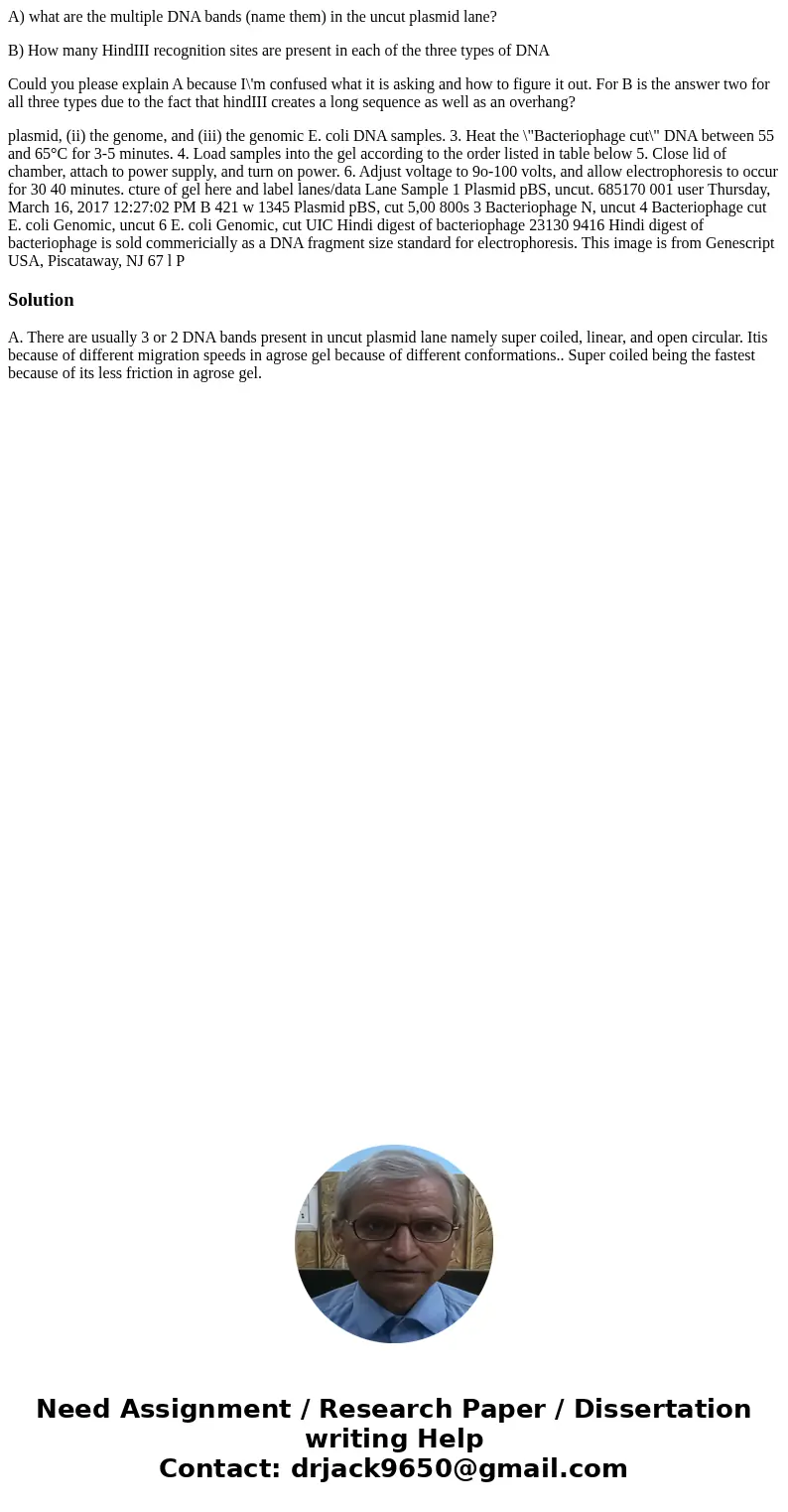A what are the multiple DNA bands name them in the uncut pla
A) what are the multiple DNA bands (name them) in the uncut plasmid lane?
B) How many HindIII recognition sites are present in each of the three types of DNA
Could you please explain A because I\'m confused what it is asking and how to figure it out. For B is the answer two for all three types due to the fact that hindIII creates a long sequence as well as an overhang?
plasmid, (ii) the genome, and (iii) the genomic E. coli DNA samples. 3. Heat the \"Bacteriophage cut\" DNA between 55 and 65°C for 3-5 minutes. 4. Load samples into the gel according to the order listed in table below 5. Close lid of chamber, attach to power supply, and turn on power. 6. Adjust voltage to 9o-100 volts, and allow electrophoresis to occur for 30 40 minutes. cture of gel here and label lanes/data Lane Sample 1 Plasmid pBS, uncut. 685170 001 user Thursday, March 16, 2017 12:27:02 PM B 421 w 1345 Plasmid pBS, cut 5,00 800s 3 Bacteriophage N, uncut 4 Bacteriophage cut E. coli Genomic, uncut 6 E. coli Genomic, cut UIC Hindi digest of bacteriophage 23130 9416 Hindi digest of bacteriophage is sold commericially as a DNA fragment size standard for electrophoresis. This image is from Genescript USA, Piscataway, NJ 67 l PSolution
A. There are usually 3 or 2 DNA bands present in uncut plasmid lane namely super coiled, linear, and open circular. Itis because of different migration speeds in agrose gel because of different conformations.. Super coiled being the fastest because of its less friction in agrose gel.

 Homework Sourse
Homework Sourse